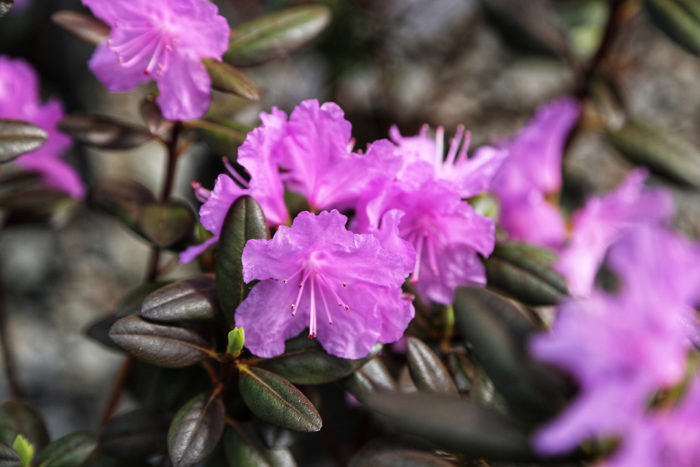
Rhododendrons (Rhododendron spp. and cvs., Zones 4-9) are an amazing group of stalwart evergreen plants that are often not considered by residential gardeners because they are afraid they’ll end up with one of the very large varieties that take years to bloom and can take over a garden. While there are certainly appropriate settings for those large specimens, here are a few of my favorite smaller-scale rhododendrons ideal for the Pacific Northwest. Whether big or small, all rhododendrons require acidic, well-drained, and humus-rich soil; even, year-round moisture due to their fine fibrous root system; and part-shade/morning-sun exposure for best health and growth.
‘P. J. M. Elite’ rhododendron shines in multiple seasons
‘P. J. M. Elite’ rhododendron (Rhododendron ‘P. J. M. Elite’, Zones 4–8) does an amazing year-round job in the garden. Starting in early to mid-spring, this medium-size shrub puts on a spectacular show of small lavender-purple trusses. These flowers are not only beautiful but beneficial for the early pollinators and hummingbirds in the Pacific Northwest. After the blooms finish, the shrub and its dark green leaves are a great backdrop to perennials, bulbs, and annuals. Late-season interest continues when the temperatures drop: its dark green leaves turn a wonderfully rich dark mahogany. Often in cooler spring weather, the lavender-purple flowers will bloom while the leaves are still mahogany—a wonderful combination. This shrub’s typical size is 4 feet tall and wide, but it can get larger.
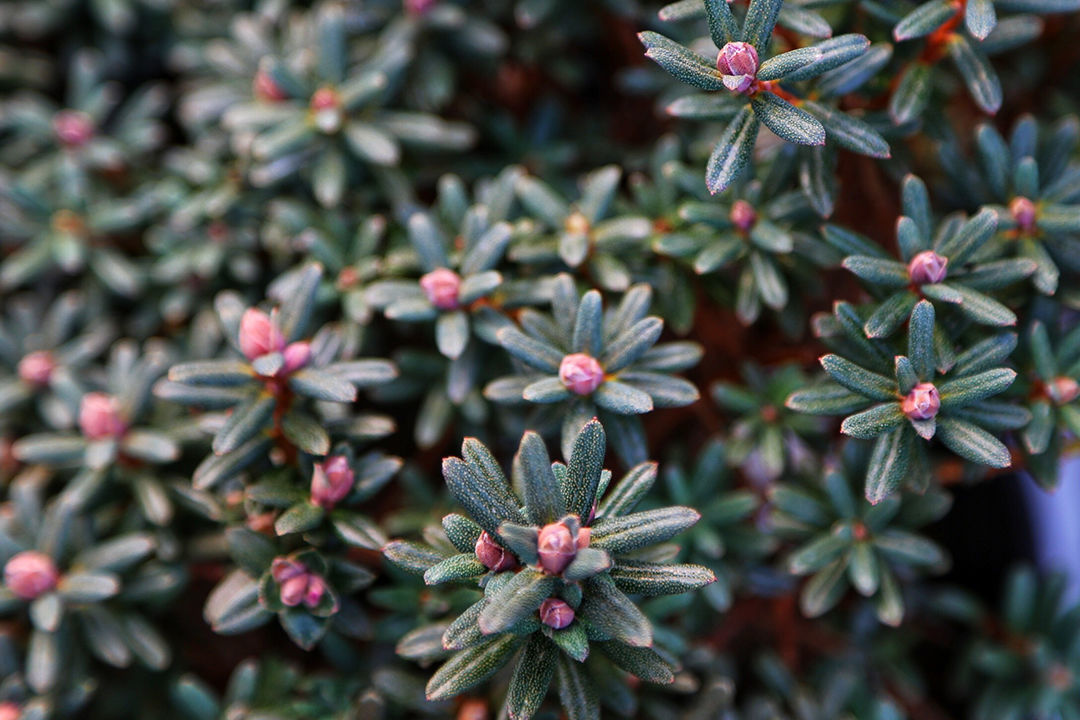
Dwarf purple rhododendron is compact and colorful
Dwarf purple rhododendron (Rhododendron impeditum, Zones 5–8) is a cute, compact rhododendron with unique, scented, tiny, silvery gray-green leaves that most people mistake for something other than a rhododendron. Its pale, bluish-purple, and sweetly scented flowers cover the entire shrub during its blooming season and cause everyone who walks by to inquire. After the blooms fade, it will hold its own in the garden as a tidy, slow-growing evergreen shrub. It looks great en masse under a specimen tree, interplanted in rock gardens, or as a small-scale evergreen hedge. It can take more sun if evenly watered throughout our dry summer season. Be careful to choose small perennials, bulbs, and annuals that do not cover this shrub. A slow grower, dwarf purple rhododendron typically reaches 1 foot tall and 2 feet wide.
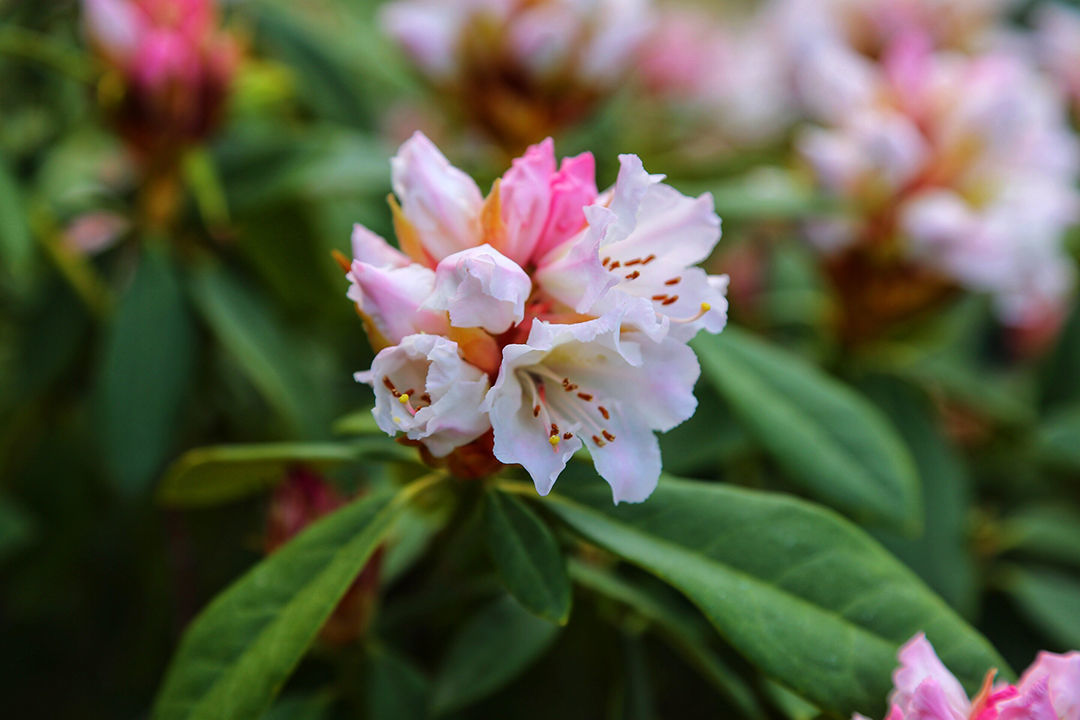
Yak rhododendron is as tough as it is attractive
Don’t let this shrub’s mouthful of a scientific name (Rhododendron degronianum subsp. yakushimanum, Zones 5–8) scare you off. Affectionately called ‘Yak’ or ‘Yaku’ rhododendrons, this group of hybrid rhododendrons is a great addition to any garden. In spring, their colorful clusters of flowers range from white to pink, and they are available as hundreds of named cultivars in myriad color combinations. ‘Ken Janik’ with rosy pink buds opening to pink and ‘Yaku Princess’ in pure white are some of the widely available cultivars. Your local nursery should carry these tough, beautiful rhododendrons, or you can order them online. They originate from coastal Japan and have adapted to the tough conditions of cold and salty seaside air. Their long, curved leaves are covered in fine, fuzzy hairs called indumentum, which enhances their year-round beauty. Their topsides are typically covered with white hairs, while the bottoms are covered with hairs from white to rich tawny. These shrubs look great positioned where the leaves can be viewed up close, such as in a patio setting or from the underside in a raised bed, slope, or hillside. Their typical size is 3 feet tall and wide, but they can get a little larger.
Even when garden space is scarce, there is no reason not to make some small rhodies part of your collection. They will thank you with spectacular colors and foliage just like their larger cousins.
Jason Jorgensen is a landscape designer in Seattle, Washington.



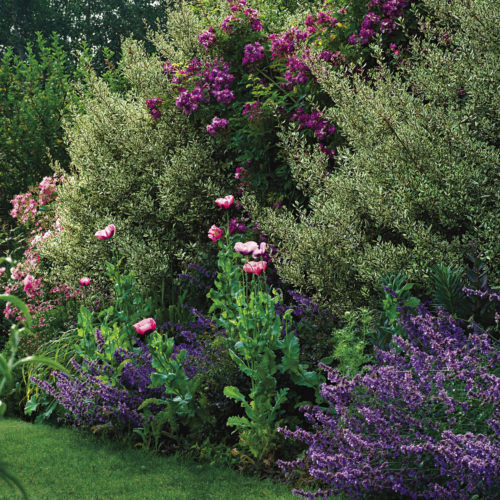
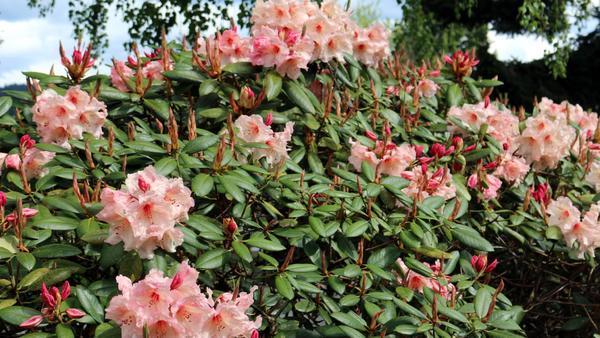












Comments
Log in or create an account to post a comment.
Sign up Log in